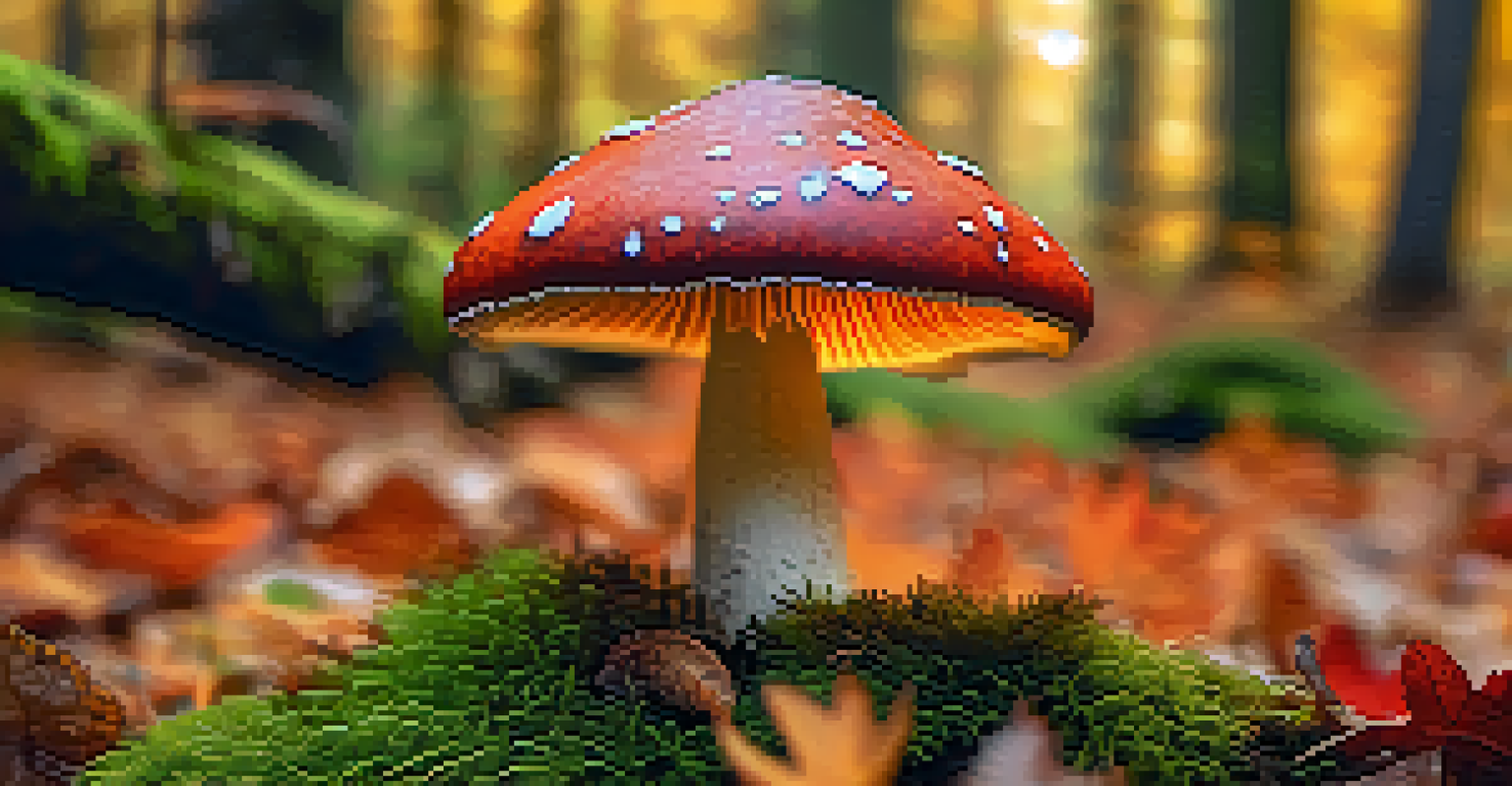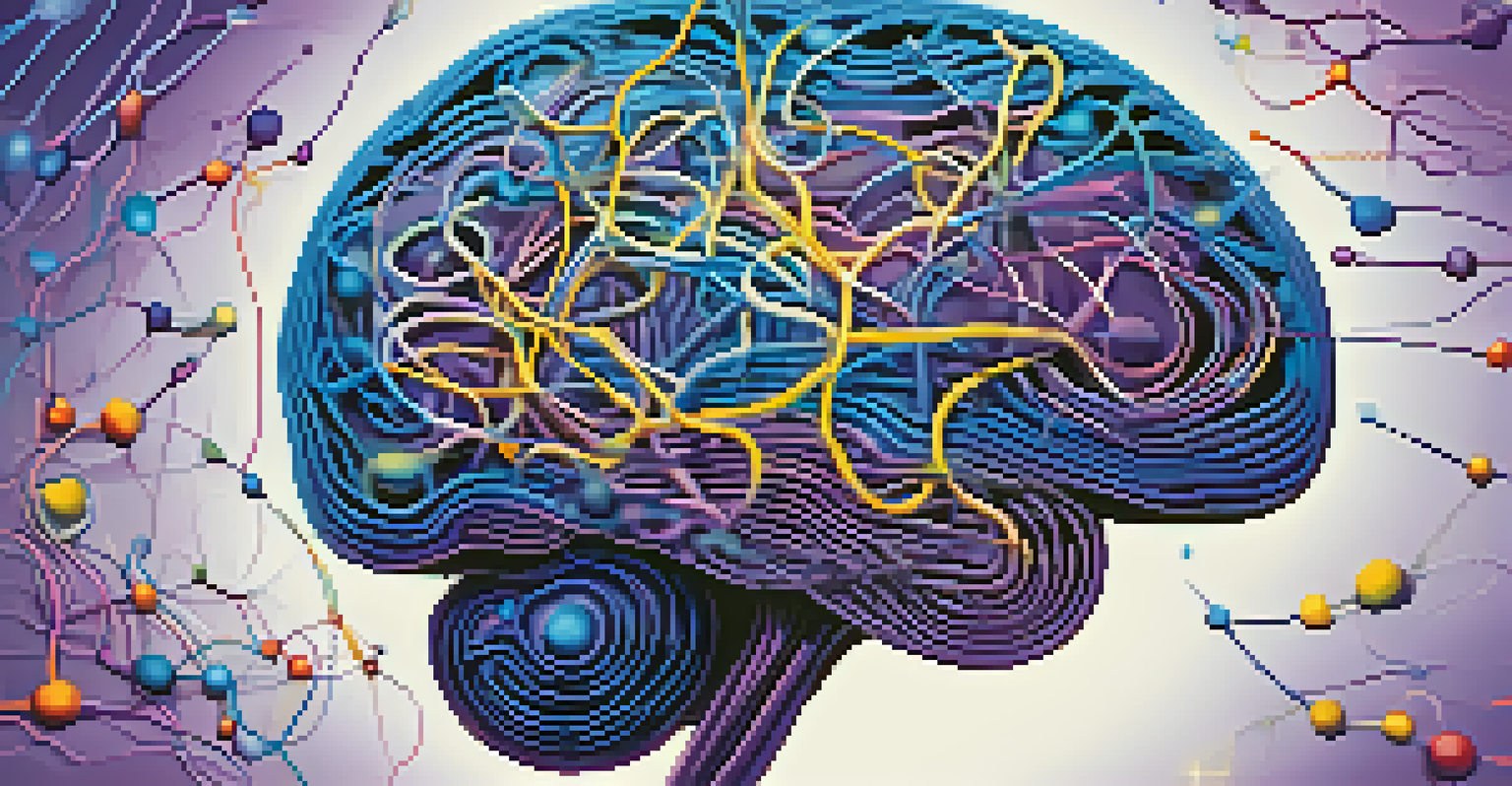Psychedelics and Neurotransmitters: A Complex Relationship

Understanding Psychedelics: A Brief Overview
Psychedelics are substances that can alter perception, mood, and cognition. Common examples include LSD, psilocybin (magic mushrooms), and DMT. These compounds have been used for centuries in various cultures for spiritual and therapeutic purposes.
Psychedelics can be a catalyst for personal transformation and healing, unlocking pathways to a deeper understanding of ourselves.
Recent years have seen a resurgence of interest in psychedelics, particularly in their potential to treat mental health disorders such as depression and PTSD. This renewed focus has sparked scientific research aimed at understanding how these substances interact with the brain.
At the core of this exploration is the relationship between psychedelics and neurotransmitters, the chemical messengers that play critical roles in brain communication. This relationship is complex and worth diving into.
What Are Neurotransmitters and Their Role?
Neurotransmitters are chemicals that transmit signals between nerve cells, or neurons. They are essential for various functions, including mood regulation, sleep, and cognitive processes. Some well-known neurotransmitters include serotonin, dopamine, and norepinephrine.

Each neurotransmitter has a unique role in the brain's ecosystem. For instance, serotonin is often linked to feelings of well-being and happiness, while dopamine is associated with pleasure and reward. Understanding these roles is crucial for grasping how psychedelics might influence mental states.
Psychedelics and Mental Health
Psychedelics like LSD and psilocybin show potential in treating mental health disorders such as depression and PTSD by influencing neurotransmitter activity.
The interaction between psychedelics and neurotransmitters can lead to profound changes in perception and consciousness. This is where the relationship starts to get particularly intriguing.
The Connection Between Psychedelics and Serotonin
One of the most notable interactions is between psychedelics and serotonin, especially through the serotonin 2A receptor. Psychedelics like LSD and psilocybin closely resemble serotonin in structure, allowing them to bind to these receptors and alter brain activity.
The mind is like a parachute. It doesn’t work if it isn’t open.
When psychedelics activate the serotonin 2A receptor, it can lead to enhanced sensory perception and emotional experiences. This is why many users report vivid visuals and profound insights during their trips.
Research indicates that this interaction may also help reset dysfunctional neural circuits associated with mental health issues, making it a promising avenue for therapeutic applications.
Dopamine's Role in Psychedelic Experiences
Dopamine, another key neurotransmitter, also plays a significant role in the psychedelic experience. While its primary association is with reward and pleasure, it also influences motivation and attention.
Psychedelics can increase dopamine levels, which may contribute to the feelings of euphoria and heightened awareness reported by users. This is particularly relevant in the context of addiction treatment, where altering dopamine pathways might help reshape behaviors.
Neurotransmitters Explained
Neurotransmitters like serotonin and dopamine play crucial roles in mood regulation and perception, which psychedelics can significantly alter.
Understanding how psychedelics modulate dopamine can provide insights into their potential for therapeutic use, particularly in addressing substance use disorders.
The Impact of Psychedelics on Mood Regulation
Psychedelics have shown promise in mood regulation, largely due to their effects on neurotransmitters like serotonin and dopamine. The ability to boost serotonin levels can lead to improved mood and a sense of well-being.
Studies have found that psychedelics can create lasting changes in mood, even after the substance has worn off. This suggests that they may help rewire our brain's emotional pathways, offering a new approach to treating depression and anxiety.
By understanding the mechanisms behind these mood changes, researchers hope to develop new therapies that harness the power of psychedelics for long-term mental health benefits.
Potential Risks and Considerations
While psychedelics hold great potential, they are not without risks. The effects can vary greatly depending on the individual, the dosage, and the setting. Some people may experience anxiety or paranoia during their trips.
Additionally, there's the concern of triggering underlying mental health conditions. For those with a personal or family history of psychosis, psychedelics may not be advisable.
Risks of Psychedelic Use
While promising, psychedelics can pose risks, including anxiety and the potential to trigger underlying mental health conditions, necessitating careful use.
Understanding these risks is essential for safe usage and for developing guidelines for therapeutic use, ensuring that the benefits can be maximized while minimizing potential harm.
The Future of Psychedelic Research
The field of psychedelic research is rapidly evolving, with more studies emerging that explore their therapeutic potential. As scientists continue to unravel the complexities of how psychedelics interact with neurotransmitters, we may uncover new treatment options for various mental health disorders.
The ongoing research is not just about understanding the substances themselves but also about their implications for mental health care. The hope is that psychedelics could integrate into traditional treatment protocols, offering patients new avenues for healing.

As we look to the future, the relationship between psychedelics and neurotransmitters will remain a central focus, potentially reshaping our understanding of mental health and wellness.